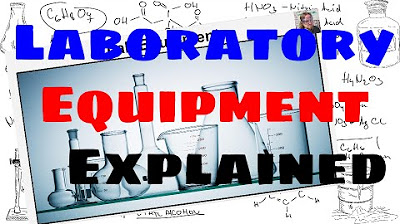Introduction to Culture [AP Human Geography Review Unit 3 Topic 1]
Summary
TLDRIn this educational video, Mr. Sin explores the complexities of culture in AP Human Geography. He distinguishes between material and non-material culture, emphasizing the latter's intangible aspects like beliefs and practices. The video prompts viewers to reflect on their own culture, questioning how various societal factors—from transportation to architecture, language to food—shape their cultural identity. Mr. Sin also discusses subcultures, modern vs. folk culture, and the concepts of ethnocentrism and cultural relativism, urging viewers to appreciate cultural diversity.
Takeaways
- 🌐 **Culture Definition**: Culture is complex and difficult to define, encompassing both material and non-material aspects.
- 🏺 **Material Culture**: Includes physical items that individuals or societies value, such as objects that can be bought, worn, or used.
- 💭 **Non-Material Culture**: Comprises shared practices, ideas, and beliefs like holidays, life achievements, and milestones.
- 🤔 **Cultural Self-Reflection**: Encourages viewers to think about their own culture in terms of material and non-material aspects.
- 🏠 **Environmental Influence**: How people get around, architecture, local shops, and urban vs. rural settings influence culture.
- 🌱 **Land Use**: Prioritization of land for recreation, commerce, or industry shapes societal norms and values.
- 🗣️ **Social Interaction**: The way people interact, whether through technology or face-to-face, reflects cultural practices.
- 🌍 **Cultural Diffusion**: Modern culture often originates from developed regions and spreads through hierarchical diffusion, while folk culture spreads through relocation diffusion.
- 🏢 **Subcultures**: Smaller groups within a larger culture, like school grades, can have their own unique cultures.
- 🌱 **Folk and Indigenous Cultures**: These cultures are at risk of being replaced by modern culture and often resist modern technology.
- 🌐 **Cultural Perspectives**: Understanding ethnocentrism and cultural relativism helps in viewing other cultures without prejudice.
Q & A
What is the difference between material culture and non-material culture?
-Material culture consists of physical items that a person or society has given value to, such as items important in an individual's life or society. Non-material culture, on the other hand, consists of an individual's ideas and beliefs, such as how they celebrate life achievements and milestones.
How does one's culture influence their identity?
-One's culture shapes their identity through shared practices, technology, attitudes, beliefs, behaviors, architecture, food, and more. These elements come together to form a person's culture and identity.
What is the role of society in shaping an individual's culture?
-Society plays a significant role in shaping an individual's culture by influencing their shared practices, ideas, and beliefs. It also affects how individuals interact with their environment and how they perceive and adopt cultural norms.
How can one describe their own culture?
-One can describe their own culture by considering aspects such as transportation methods, architecture styles, local commerce, urban vs. rural living, land use, social interactions, language, clothing, music, religion, food, gender roles, societal ranking, government, currency, education, jobs, social norms, climate, resources, and environmental impact.
What is a subculture and how does it relate to a larger culture?
-A subculture is a smaller group within a larger culture that has its own unique cultural characteristics. For example, a school may have its own school culture, but within that, individual grades or classes may have their own distinct subcultures.
How does modern culture or pop culture differ from folk culture?
-Modern culture or pop culture often originates in more developed countries or regions and is diverse, changing over time, and often diffuses through hierarchical diffusion. Folk culture, on the other hand, is more homogeneous, often diffuses through relocation diffusion, and is heavily influenced by family and religion.
What are the characteristics of indigenous culture?
-Indigenous culture refers to distinct social and cultural groups that have collective ancestral ties to the lands and natural resources where they live. These cultures are often at risk of being replaced by modern culture.
What is ethnocentrism and how does it affect cultural understanding?
-Ethnocentrism is when a person views another culture through their own cultural lens, evaluating and judging it by their own cultural standards. This can lead to misunderstandings, prejudice, and negative stereotypes.
What is cultural relativism and how does it contribute to understanding other cultures?
-Cultural relativism is when an individual views and evaluates another culture by using that culture's standards. This approach allows for a better understanding of the culture without judgment based on one's own cultural standards.
How does the environment influence culture?
-The environment influences culture by shaping the shared practices, beliefs, and behaviors of a society. It affects how people interact with their surroundings, what resources they have access to, and how they adapt to their climate and geographical features.
What is the impact of modern technology on culture?
-Modern technology tends to promote modern culture, which can lead to the replacement of folk cultures and indigenous cultures. As the world becomes more connected, technology facilitates the spread of cultural elements, often favoring modern or pop culture.
Outlines

Cette section est réservée aux utilisateurs payants. Améliorez votre compte pour accéder à cette section.
Améliorer maintenantMindmap

Cette section est réservée aux utilisateurs payants. Améliorez votre compte pour accéder à cette section.
Améliorer maintenantKeywords

Cette section est réservée aux utilisateurs payants. Améliorez votre compte pour accéder à cette section.
Améliorer maintenantHighlights

Cette section est réservée aux utilisateurs payants. Améliorez votre compte pour accéder à cette section.
Améliorer maintenantTranscripts

Cette section est réservée aux utilisateurs payants. Améliorez votre compte pour accéder à cette section.
Améliorer maintenant5.0 / 5 (0 votes)






